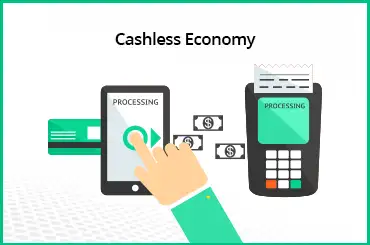Knowing what is quotation and why they are used in business operations is vital. They play a crucial role in the sales and procurement processes, providing important details such as pricing, terms, and specifications. Understanding its purpose and how it differs from other forms of written communication is essential for businesses of all sizes and industries.
This article will dive into quotations, exploring their significance, elements, and usage in various business contexts. Whether you are a seller, buyer, or simply curious about the intricacies of business communication, this article can help you better understand everything about quotations.
What Is Quotation?
A quotation refers to a seller's official document or written statement to a potential buyer outlining a product or service's pricing, terms, and specifications. It serves as a formal offer or estimate, providing the buyer with detailed information about the cost, quantity, quality, and other relevant details of the product or service being offered for sale.
Quotations are commonly used in a variety of business transactions, including sales, procurement, and contract negotiations. They are often utilized in industries such as manufacturing, construction, services, and wholesale or retail trade, where pricing and terms are critical factors in the decision-making process.
A well-prepared quotation should include essential elements starting from the seller's contact information to payment terms. Quotations may be presented in various formats, including written documents, emails, electronic documents, or verbal communication.
Importance of Quotations in Business
Let's explore the importance of quotation in business:
Clarity and Transparency
Quotations provide a clear and transparent breakdown of the goods, services, or products offered, along with their associated costs. They help establish a common understanding between the parties involved and ensure that all relevant details about the services are explicitly mentioned.
Legal Protection
Quotations can serve as legally binding documents that protect the interests of both parties when they are accepted. Once the customer accepts a quotation, it becomes a legally binding agreement outlining the terms and conditions of the transaction.
Budgeting and Financial Planning
Quotations assist businesses in budgeting and financial planning. They provide a comprehensive breakdown of costs, allowing firms to estimate expenses accurately and plan their finances accordingly.
Record Keeping and Documentation
Quotations are essential for businesses to maintain a comprehensive and organized documentation system. They provide a historical record of business transactions which can be helpful for future reference or auditing purposes.
When to Send Quotation in Business?
Generally, it is essential to send quotes in business whenever there is a formal request for quotation, pricing, or proposal.
There are various instances why it is the seller's responsibility to provide the customer with a quotation:
- When a potential customer sends a formal request for a quotation or a proposal.
- When a customer expresses interest in a product or service and requests pricing information.
- Quotations can be used during price negotiations with customers.
- A quotation may be provided as a formal confirmation for existing customers who require renewals or reorders of products or services.
- Sometimes, a quotation may be incorporated as an integral part of a formal contractual agreement between the parties.
How to Write a Quotation?
Learning how to make a quotation is important to communicate professionally and clearly with the customer. Here are some steps to follow when writing a professional quotation:
- Begin with a professional header with your company's name, logo, contact information, and date (you can also download a free quotation format).
- Provide a detailed breakdown of the products, services, or items being quoted, along with their respective quantities, prices, and any other relevant details. Use bullet points or tables for clarity.
- Clearly outline any terms and conditions associated with the quotation, such as payment terms, delivery timelines, and other relevant information.
- Include any additional information that may be important for the client, such as warranties, return policies, or customization options.
- Summarize the total cost of the quotation, including any taxes or fees, clearly and concisely.
- Lastly, add a signature line and any attachments or supporting documents, if applicable.
What to Include in a Quotation Template?
A quotation template is a document businesses use to provide detailed pricing and terms for products or services they offer clients or customers. It typically includes the following elements:
- Business Information: Include your business name, logo, and contact information, such as an address, phone number, email address, and website.
- Client Information: Include the name, address, and contact information of the client or customer to whom the quotation is addressed.
- Quotation Number and Date: Assign a unique quotation number and indicate when the quotation is issued. It helps with tracking and reference purposes.
- Itemized List of Products or Services: Provide a detailed breakdown of the products or services being quoted, including their descriptions, quantities, unit prices, and total prices.
- Pricing Information: Clearly state the pricing information, including the currency used, any discounts applied, and any additional charges such as taxes, shipping, or handling fees.
- Terms and Conditions: Outline any terms and conditions that apply to the quotation, such as payment terms, delivery or shipping details, warranties, and other relevant policies.
- Signature and Contact Information: Include a space for your signature or that of an authorized business representative.
- Additional Notes: Provide any additional notes or comments relevant to the purchase quotation or special instructions, if applicable.
How to Format Sales Quotation?
Formatting a sales quotation typically involves several key elements, including visual alignment of all the elements including the company's name and logo. Here's a step-by-step guide on how to format a sales quotation:
- Use a professional business letterhead that includes your company name, address, phone number, and email address at the top of the document.
- Include the customer's name, address, and contact information below the company's name and logo.
- Add a quotation title or reference number. Provide a title or reference number for the quotation to make it easy for you and the customer to identify and track it.
- Provide a detailed description of the products or services being quoted in the form of a table for clear understanding. Include product specifications and any additional details relevant to the quotation.
- Provide pricing information. Clearly state the pricing information, including unit prices, total prices, and applicable taxes or fees.
- Include any terms and conditions that apply to the quotation, such as payment terms, delivery, or shipping terms.
- Include your contact information, such as your company's address, phone number, email address, and website, so the customer can easily contact you for further inquiries or accept the quotation.
- Add a signature line. Include a signature line for both your company and the customer, where both parties can sign to indicate their acceptance of the quotation.
Quotations vs Proforma Invoice
Quotation and proforma invoices are both essential types of documents used in business transactions, particularly in the context of sales. However, they differ in their purpose, content, and legal implications.
Quotation
A quotation, also known as a quote or an estimate, is a document a seller provides to a prospective buyer that outlines the estimated costs and terms of a potential sale. It is typically provided in response to a request for pricing information from a buyer.
Proforma Invoice
On the other hand, a proforma invoice is a document that resembles a final invoice but is used before the actual sale of goods or services to confirm all the payment terms. It is often used to provide the buyer with a detailed breakdown of the costs associated with a potential transaction and other fees.
Quotations vs Estimate
Quotations and estimates are documents used in business transactions to provide pricing information to prospective buyers. Let's see their purpose, in this section:
Quotation
A quotation is a formal document that provides a detailed estimate or proposal of the cost of goods or services that a business is offering to a customer. It typically includes detailed information such as the item or service description, quantity, unit price, total price, payment terms, and validity period.
Estimate
On the other hand, an estimate provides a rough approximation of the costs associated with a particular job or project. It is typically used when the pricing details are not fully known or are subject to change based on various factors, such as labor costs, material costs, and unforeseen expenses. An estimate may include a different level of detailed information than a quotation, and the final costs may vary from the estimated amount.
Create Professional Quotations and Manage Quotations Easily!
A quotation format is a powerful tool in sales that provides prospective buyers with a detailed proposal. Mastering the art of creating professional, crisp, and catchy quotations can be a key ingredient for sales success. Use TranZact to create quotations and compare them on a centralized dashboard. It also helps you to manage your sales and purchase records seamlessly to improve productivity!
FAQs on Quotations
1. What is the price quotation?
A price quotation is a document a seller provides to a prospective buyer that outlines the estimated costs and terms of a potential sale.
2. What is a sales quotation?
A quotation in sales serves as an offer or proposal from the seller to the buyer, providing pricing information and specifying the terms and conditions under which the seller is willing to sell the goods or services.
















